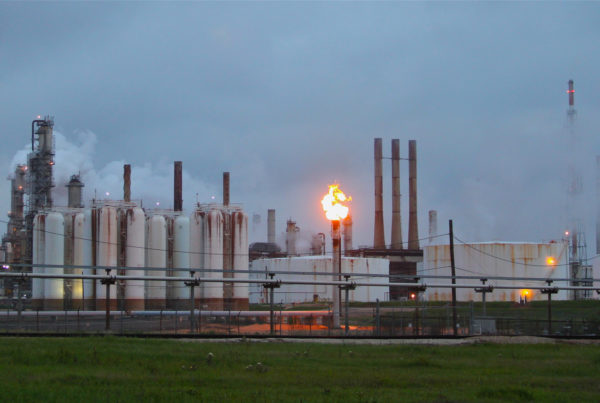Hydrogen is the simplest and most abundant element in the universe. It’s also famously flammable. Remember the 1937 Hindenburg disaster?
Fortunately, our understanding of hydrogen and how to safely use it has come a long way since then. It’s now an emerging player in green energy, with some scientists optimistic it could be a key component in reducing carbon emissions that are damaging the planet. And Texas, already a key producer of wind and solar power, may be well positioned to be a major hub of the burgeoning hydrogen power industry.
One major advantage to hydrogen is its versatility, says Chris Tomlinson, a business columnist for the Houston Chronicle who recently wrote about Texas’ hydrogen industry.
“Hydrogen has many, many uses,” Tomlinson told Texas Standard. “It can be used in the same turbines that natural gas is used in to generate electricity. Hydrogen can be used to make ammonia and then ammonia can be used as a liquid fuel. That’s what’s so exciting about hydrogen right now, is that there are many different applications in gas form and liquid form in many different technologies.”
Texas is already a major producer of hydrogen, but that hydrogen is used for things like manufacturing textiles, fertilizer and rubber. Plus, that type of hydrogen isn’t particularly environmentally friendly.
“Right now, we mostly make it from natural gas, and that’s why they call it ‘gray hydrogen,’ because there’s really nothing green about it,” he said. “Making hydrogen in that old-fashioned way actually creates more climate change; it doesn’t fight it or mitigate it.”
But changing how hydrogen is produced can make it an attractive alternative energy source.
“What Texas can do, though, is take power from wind and solar, which we have plenty of, and use that to make hydrogen and then it becomes ‘blue hydrogen,’” Tomlinson said. “And that is something that we can that we can be proud of and sell into the future.”
One of the biggest drawbacks right now is cost. Tomlinson says hydrogen power is about three times more expensive than a lithium ion battery, and two to four more times expensive than diesel or jet fuel. But he says companies are investing billions of dollars in new technologies, and Rice University, in particular, has promising research that may make hydrogen more cost-effective in the future.
“The exciting thing is that, you know, if we can do that in five or 10 years, then we could have a completely zero-emission electric grid,” Tomlinson said. “We could reduce our requirement for jet fuel and diesel fuel. It’s all about the technology, and the innovation, now, is there.”
Big names in the oil and gas industry are taking notice of hydrogen’s potential, too.
“Shell Oil is spending hundreds of millions of dollars on hydrogen fueling stations in California,” Tomlinson said. “Air Liquide, a French company with its North American headquarters in Houston, is working on creating green hydrogen that is made with clean energy and no emissions at all. It’s the big boys in the energy industry that are going to lead the way on this. And that’s kind of what’s so exciting about Texas is that, you know, there is a place for us in a clean energy future. We’re not just all about natural gas and oil”














